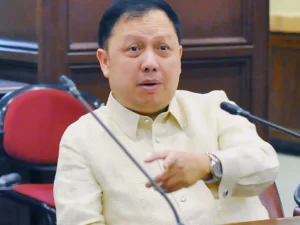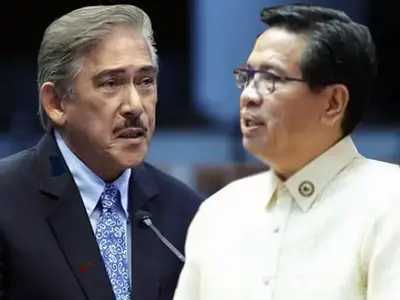
Waist-deep floods engulf Zapote Junction in Las Piñas City stranding commuters and forcing motorists to find higher ground. Photo courtesy: Edd Gumban
LAS Piñas Rep. Mark Anthony Santos has announced his intention to initiate a formal investigation into the controversial ₱2.5-billion flood control project along the Las Piñas-Zapote River Drive, following the recent flooding in Barangay Pulanglupa Dos during heavy rainfall.
According to Rep. Santos, the continued flooding in the area—despite the project’s reported completion in 2022—is a clear sign that questions must be raised regarding how the funds were used and the quality of its implementation.
“If the project was truly completed and ₱2.5 billion was spent, why do the roads still turn into rivers whenever it rains? We need to ask: was this project effective in controlling floods, or did it serve other interests?” said Rep. Santos.
Las Piñas has two major rivers: the 12.6-kilometer Las Piñas River and the 18.3-kilometer Zapote River. These rivers are interconnected and share a combined 25.1 kilometers of tributaries.
Over time, due to negligence, lack of discipline, and poor management, these rivers have become dumping grounds for waste and sewage, choking the waterways with pollution.
The project began in 2012 under the initiative of Senator Cynthia Villar, implemented by the Department of Public Works and Highways (DPWH) under then-Secretary Mark Villar, and supported by former Las Piñas Representative Camille Villar.
Despite the long implementation period and multi-billion-peso funding, the communities surrounding the Las Piñas and Zapote Rivers continue to suffer from severe flooding. Just this Tuesday, floodwaters rose again, submerging homes and vehicles in Brgy. Pulanglupa Dos, causing major inconvenience and danger to residents.
Public concern has also surfaced, questioning why certain roads were constructed at such depth, and why there appears to be no clear connection to related projects like the Manila Bay reclamation or other initiatives linked to political personalities involved in the project.
Motorists and residents have reported multiple safety concerns, including blind spots and narrow lanes within the River Drive, which do not conform to standard road safety design. These issues, Rep. Santos said, only strengthen the case for a full investigation.
Rep. Santos plans to file a resolution in Congress calling for the investigation, which will include a review of Commission on Audit (COA) reports, hearings with concerned agencies such as the DPWH, and consultations with affected residents.
“A project of this scale requires full transparency and accountability. Every peso from public funds should benefit the people—not serve business or private interests,” stressed Santos.
Alongside the investigation, Rep. Santos’ office is also preparing to roll out a Comprehensive Flood Management Plan, which will include flood mapping, river rehabilitation, drainage modernization, and community-based anti-flood campaigns.
“A project is meaningless without real results. The ultimate goal is public safety. Flooding is not just an infrastructure problem—it is an issue of accountability, leadership, and action,” Santos concluded.



